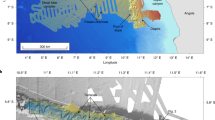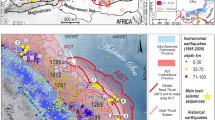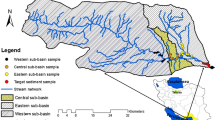Abstract
THE source and depositional environment of the Cambrian sediments in the Lleyn Peninsula, North Wales, has been the subject of much dispute. Early work by Nicholas1 described some of the sedimentary structures, but their importance in relation to the palæogeography of the Welsh geosyncline was first discussed by Kopstein2 working in the Harlech Dome and later by Bassett and Walton3 in the St. Tudwal's Peninsula. Each member of the succession can be correlated with similar horizons in the Harlech Dome4.
This is a preview of subscription content, access via your institution
Access options
Subscribe to this journal
Receive 51 print issues and online access
$199.00 per year
only $3.90 per issue
Buy this article
- Purchase on SpringerLink
- Instant access to full article PDF
Prices may be subject to local taxes which are calculated during checkout
Similar content being viewed by others
References
Nicholas, T. C., Quart. J. Geol. Soc., 71, 83 (1915).
Kopstein, F. P. H. W., Ph.D. thesis, Univ. Groningen (1954).
Bassett, D. A., and Walton, E. K., Quart. J. Geol. Soc., 116, 95 (1959).
Matley, C. A., and Wilson, T. S., Quart. J. Geol. Soc., 102, 1 (1946).
Knill, J. L., J. Sediment. Petrol., 29, 317 (1959).
Author information
Authors and Affiliations
Rights and permissions
About this article
Cite this article
CRIMES, T., SLY, P. Implication of Certain Sedimentary Structures within the Cambrian Succession of the St. Tudwal's Peninsula, South-west Caernarvonshire. Nature 204, 174–175 (1964). https://doi.org/10.1038/204174a0
Issue date:
DOI: https://doi.org/10.1038/204174a0
This article is cited by
-
Palaeocurrent Directions in the Upper Cambrian of North Wales
Nature (1966)
-
Palaeocurrents in the Upper Cambrian of North Wales
Nature (1966)



